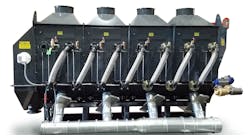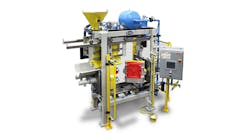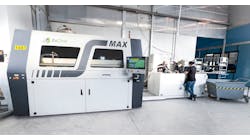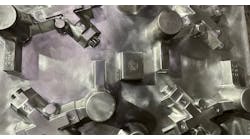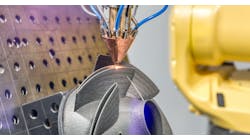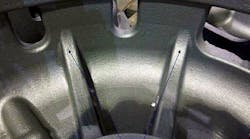Additive manufacturing has changed coremaking business forever – brining a new dimension of service to a basic foundry production, and adding problem-solving and fast-turnaround features to the precision and reliability that patternmakers have offered for decades. Take the example of Hoosier Pattern Inc. in Decatur, IN, a patternmaker that adopted additive manufacturing technology in 2013, becoming North America’s first commercial supplier of 3D-printed sand molds and cores.
Nearby in Warsaw, IN, Dalton Foundry had a problem producing a gray iron gear housing, a 29x26x12-in. part that required precision and consistency.
More specifically, the part is a section of a 443-lb. gear case, but in prototype production the corners (or ribs) of the housing were cracking at several points. The part is due to go into production sometime this year, meaning Dalton Foundry had only a few weeks to get the prototype right, to satisfy its customer.
Dalton Foundry had tried several processes and changed the gating on the prototype several times, but the cracks continued to appear in the results. Because of the location of the cracks, the foundry’s operators considered the possibility that they may be developing from thermal or mechanical stress during solidification. Simulations of the original design were run and re-run, leading the foundry to conclude that the cracks were the result of the customer’s design: the stress in the casting was caused by the dimensions of the design, because the based of the housing took longer to solidify than the smaller-dimension ribwork.
This realization led to a plan: Dalton Foundry decided to re-cut the metal tooling for the casting, but the redesign effort took much longer than expected. With time running out to complete the prototype, Dalton Foundry approached Hoosier Pattern for help producing the cores for the design.
Hoosier Pattern’s S-Max 3D printer is an ExOne Co. system capable of printing the sand/binder mixture needed to form molds and cores. It dispenses foundry-grade resin into 0.11-in. thick layers of specially engineered sand according to patterns derived from CAD data, building up layers to produce molds and cores that are dimensionally accurate and uniform. The “additive manufacturing” process also is fast, (reducing lead times) and flexible.
The S-Max also has one of the largest workspaces available: the “build envelope” measures 70.9x39.37x6.56 in.
Dalton Foundry assigned the core production to Hoosier Pattern, which was able to complete the project in one week because no excess time was needed to produce tooling. Design changes needed to overcome the cracking issue could be incorporated to the production process almost instantly.
With the 3D cores completed, Dalton Foundry poured 20 prototypes successfully – no cracks or other defects to be found. All the prototypes were ready in just a few days, not only completing the project by conserving the foundry’s development and production cost in the process.
“The success of the part required two leaps of technological faith,” according to Dalton Foundry tooling engineer Rob Burita. “Stress simulation, and using printed cores. Both worked out great.”




